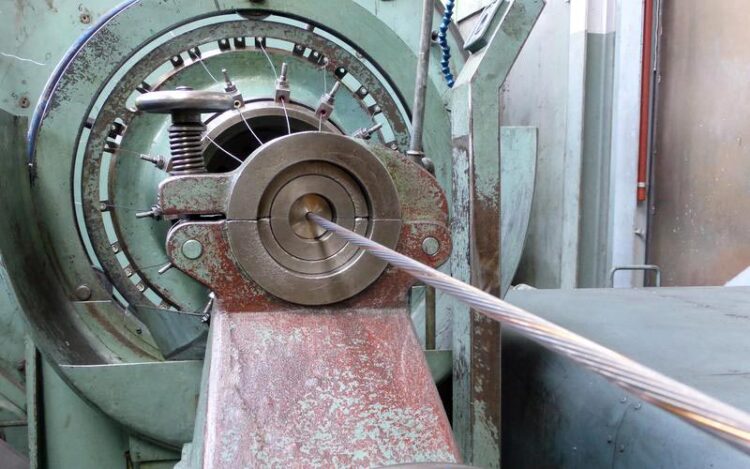Superconducting Cables for Europe’s Clean Energy Future

Production of superconducting cables
Credit: IASS/Adela Marian
Rising amounts of renewable energy coupled with an increase in decentralised power generation call for the modernisation and significant expansion of the European grids. The EU project SCARLET (“Superconducting cables for sustainable energy transition”) unites 15 partners from 7 countries around the goal of designing and industrially manufacturing superconducting cables to enable more efficient and less costly power transmission from renewable electricity generation sites.
Superconductivity is a phenomenon occurring when specific materials are cooled to very low temperatures, allowing for the transmission of electricity without any resistive losses. The promise of superconducting cables lies in their high efficiency, compact size, and reduced environmental impact. The SCARLET project will make use of these advantages by developing cables that transfer very high powers in very small conductors. The goal is to bring the technology to the last qualification step before commercialization.
SCARLET has secured funding by the European Union’s Horizon Europe research and innovation programme for the duration of four and a half years. “We are very pleased that the European Commission recognises the potential for the use of superconducting cables in the future electricity grid. It is an opportunity and now our responsibility to bring this new power cable technology to commercial performance levels. In the end, we will enable the supply of renewable energy to Europe at a significantly lower cost than what is possible today”, says project coordinator Niklas Magnusson from SINTEF Energy Research in Norway.
Ambitious research targets
On 28th and 29th of September, the partners gathered at the Institute for Advanced Sustainability Studies in Potsdam for the project’s kick-off meeting. Throughout this first get-together, participants planned the tasks and developments of the project in detail. They looked at the whole range of effects of superconducting cables, as their properties open the door for cost savings beyond the cables themselves. For instance, the high current carrying capability of the cables allows for a reduction in voltage level, leading to smaller and much less expensive equipment at offshore wind power farms.
Another novelty to be developed is the transport of electricity and hydrogen in the same pipeline. The ambitious targets call for intensive research in the years to come by the industrial partners Absolut System, ASG Superconductors, Nexans, RINA Consulting, SuperGrid Institute, SuperNode, and Vision Electric Super Conductors, and the research institutes and universities ESPCI, IASS, RSE, SINTEF, IEE Slovak Academy of Sciences, University of Bologna, and WavEC.
Towards an international standard
The SCARLET project builds upon previous work on high-power superconducting links by the IASS and its European partners, explains IASS researcher Adela Marian: “One key focus will be set on standardization activities, which will ensure that the testing experience gained in the project will be used to establish an international standard for high-power superconducting cables.“ The recommendations will be forwarded to the IEC, the international organization that prepares and publishes standards for all electrical technologies.
Wissenschaftliche Ansprechpartner:
Dr. Adela Marian
adela.marian@iass-potsdam.de
Media Contact
All latest news from the category: Power and Electrical Engineering
This topic covers issues related to energy generation, conversion, transportation and consumption and how the industry is addressing the challenge of energy efficiency in general.
innovations-report provides in-depth and informative reports and articles on subjects ranging from wind energy, fuel cell technology, solar energy, geothermal energy, petroleum, gas, nuclear engineering, alternative energy and energy efficiency to fusion, hydrogen and superconductor technologies.
Newest articles
Faster, more energy-efficient way to manufacture an industrially important chemical
Zirconium combined with silicon nitride enhances the conversion of propane — present in natural gas — needed to create in-demand plastic, polypropylene. Polypropylene is a common type of plastic found…

Energy planning in Ghana as a role model for the world
Improving the resilience of energy systems in the Global South. What criteria should we use to better plan for resilient energy systems? How do socio-economic, technical and climate change related…

Artificial blood vessels could improve heart bypass outcomes
Artificial blood vessels could improve heart bypass outcomes. 3D-printed blood vessels, which closely mimic the properties of human veins, could transform the treatment of cardiovascular diseases. Strong, flexible, gel-like tubes…





















